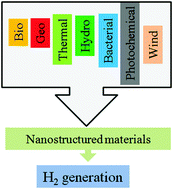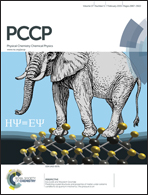Review of one-dimensional and two-dimensional nanostructured materials for hydrogen generation
Abstract
Hydrogen is an attractive alternative to fossil fuels in terms of environmental and other advantages. Of the various production methods for H2, photocatalysis requires further development so that it can be applied economically on an industrial scale. One- and two-dimensional nanostructures in both pristine and modified forms have shown great potential as catalysts in the generation of H2. We review here recent developments in these nanostructure catalysts and their efficiency in the generation of H2 under UV/visible/simulated solar light. Despite much research effort, many photocatalysts do not yet meet the practical requirements for the generation of H2, such as visible light activity. H2 production is dependent on a variety of parameters and factors. To meet future energy demands, several challenges in H2 production still need to be solved. We address here the factors that influence the efficiency of H2 production and suggest alternatives. The nanostructures are classified based on their morphology and their efficiency is considered with respect to the influencing parameters. We suggest effective ways of engineering catalyst combinations to overcome the current performance barriers.


 Please wait while we load your content...
Please wait while we load your content...